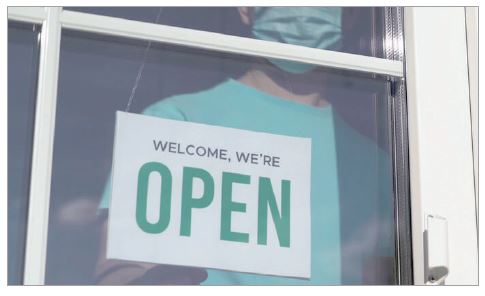TORONTO – Life has far from returned to normal. Yet, as the province begins to loosen some restrictions that will see more business reopen to the public and children return to class, one can only hope that the transition will be a safe one.
Today, three of the last remaining hotspots in the province, the city of Toronto and the regions of Peel and York reopened schools for in-person learning. However, lockdown measures and stayat- home orders will remain in these three jurisdictions and North Bay Parry Sound District until at least next Monday (February 22).
In efforts to reopen parts of the province, which have been shut down since December 26, 2020, the Ontario government began moving some public health units (PHU) into the colour-coded framework last week. While this is good news for many individuals looking to get back to some sort of normalcy, the Minister of Health, Christine Elliott stresses, “this is not a return to normal”.
The gradual transitioning of public health regions into the Covid-19 Response Framework will allow for a slow and cautious approach to reopen the economy. Just which PHUs and when they can make the transition are based on improvements in trends of key indicators.
For one, lower Covid-19 transmission rates suggest communities are regaining control over the spread of the virus. Other indicators include, improved hospital capacity and available public health capacity to conduct rapid case and contact management. Together, these factors help identify regions better equipped to ease restrictions and take steps to reopen.
Today, an additional 27 PHUs entered into various tiers of the colour-coded framework. This permits more businesses to reopen and operate under lighter restrictions and strict capacity limits.
However, the easing of restrictions come at a time when health officials sound the alarm over three variants of concern (VOC), believed to be more transmissible, circulating in communities across the province.
As of February 13, Ontario has reported 303 cases of the variant first detected in the UK, 6 cases of the South African strain and one case of the Brazilian variant. Despite following current public health measures which have resulted in a decline of cases, test positivity and hospitalization, the VOC pose a growing risk of exponential spread throughout the community.
Based on the new modelling data released last week by the Ontario government, medical experts warn that as the more contagious B.1.1.7 variant, which represents 5-10% of all cases and will soon become the dominant strain. If left unchecked, the province could face a third wave and yet another lockdown.
During the province’s modelling update (February 11), Dr. Adalsteinn Brown, co-chair of Ontario’s Covid-19 science advisory table said the province could expect to see between 5,000-6,000 cases per day of the UK strain by the end of March. Those same medical experts advise sticking with stay-at-home orders along with an aggressive vaccination campaign will help avoid a dreaded third wave and subsequent lockdown.
As of February 14, 467,626 total doses of the Covid-19 vaccine have been administered in Ontario. To date, 174,643 people have been fully vaccinated, which represents 1.2% of Ontario’s population. Vaccination efforts have slowed as the province awaits future supply shipments.
For now, remaining vigilant in public health measures is essential to minimize the spread of the virus. It takes time to assess the impact of any changes to reopening parts of the economy alongside the return to in-class learning for students. Let’s hope the changes prove beneficial for all.


